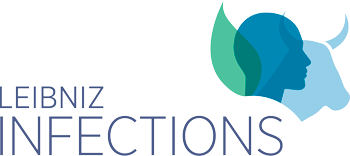One in six bacterial infections no longer responds to common antibiotics – WHO calls for increased survaillance and responsible use
A recent analysis by the World Health Organization (WHO) shows that in 2023, one in six laboratory-confirmed bacterial infections worldwide was resistant to common antibiotics. Between 2018 and 2023, resistance increased in over 40 % of monitored pathogen-antibiotic combinations – with an average annual increase of 5 to 15 %.
The data comes from the Global Antimicrobial Resistance and Use Surveillance System (GLASS), in which more than 100 countries participate. For the first time, it shows resistance rates to 22 antibiotics used against eight common bacterial pathogens. Resistance rates are highest in the WHO regions of South-East Asia and the Eastern Mediterranean, where one in three infections is resistant. In Africa, it is one in five. The WHO emphasises that the lack of diagnostic technology and laboratory infrastructure exacerbates the situation.
According to the WHO, increasing resistance to key antibiotics poses a growing threat to global health. ‘Antimicrobial resistance is outpacing advances in modern medicine, threatening the health of families worldwide,’ warns Dr Tedros Adhanom Ghebreyesus, Director-General of the WHO. ‘We must use antibiotics responsibly, and make sure everyone has access to the right medicines, quality-assured diagnostics, and vaccines.’
Antimicrobial resistance of up to 70 % in certain pathogens
Particularly worrying is the development in so-called Gram-negative bacteria such as Escherichia coli and Klebsiella pneumoniae. These pathogens are often the cause of severe bloodstream infections that can lead to sepsis, organ failure or death. More than 40 % of E. coli and over 55 % of K. pneumoniae globally are resistant to third-generation cephalosporins – antibiotics that are commonly used as first-line treatment. In the African region, resistance even exceeds 70 %.
Other antibiotics, including carbapenems and fluoroquinolones, are losing effectiveness against E. coli, K. pneumoniae, Salmonella and Acinetobacter. Carbapenem resistance, once rare, is becoming more frequent, limiting treatment options and requiring the use of reserve antibiotics. These drugs are considered a last resort, but they are expensive and often unavailable in low- and middle-income countries.
Progress is being made in establishing surveillance systems: the Global Antimicrobial Resistance and Use Surveillance System (GLASS) now covers 104 countries – four times more than in 2016. However, almost half of the countries did not report data to GLASS in 2023, and numerous countries still lacked the necessary systems to collect reliable data.
International and interdisciplinary cooperation in the sense of One Health
The WHO calls on all countries to report reliable data on AMR and antimicrobial use by 2030 and to strengthen their health systems. Antibiotics are not only used in human and veterinary medicine, but also in agriculture, e.g. to increase production. Only through coordinated action in line with the ‘One Health’ approach – across humans, animals, plants and the environment – and by involving various fields and scientific disciplines can the spread of resistant pathogens be contained.
This is the approach pursued by the Research Alliance Leibniz INFECTIONS. In order to understand why drug resistance develops and how it spreads, experts from many disciplines – not just medicine – need to work closely together. Accordingly, Leibniz INFECTIONS draws on the expertise of 15 Leibniz Institutes and other partners. The research network's interdisciplinary approach combines biological, social, economical and ecological perspectives to develop comprehensive solutions for containing antimicrobial resistance.
Further information:
WHO press release "WHO warns of widespread resistance to common antibiotics worldwide“
WHO-Report: Global antibiotic resistance surveillance report 2025
WHO GLASS Dashboard with interactive data


